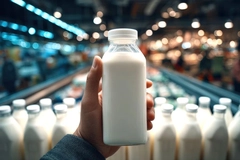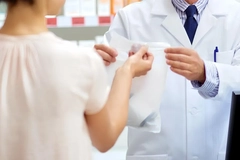Microplastics found in breast milk: Italian researchers urge politicians to promote pollution reduction laws

11 Oct 2022 --- Researchers at the Università Politecnica delle Marche in Ancona, Italy, have detected microplastic in human breast milk for the first time and want to use their findings to pressure politicians to enforce stricter plastic pollution laws.
The evidence of microplastics in human breast milk, coupled with the previous discovery in the human placenta in 2020, represents “a great concern,” impacting “extremely vulnerable” infants, say the study authors.
The study, published in Polymers journal, shows that the chemicals possibly contained in F&B and personal care products consumed by breastfeeding mothers may be transferred to their babies, potentially exerting a toxic effect.
“The proof of microplastics’ presence in breast milk increases our great concern for the extremely vulnerable population of infants,” says Dr. Valentina Notarstefano at the Università Politecnica delle Marche.
Political pressure
The researchers claim that despite the concerning findings, breastfeeding remains “by far” the healthiest way to feed a baby.
 Researchers are still unaware of the health effects of microplastic on humans and infants in particular. “It must be stressed that the advantages of breastfeeding are much greater than the disadvantages caused by the presence of polluting microplastics. Studies like ours must not reduce the breastfeeding of children, but instead raise public awareness to pressure politicians to promote laws that reduce pollution.”
Researchers are still unaware of the health effects of microplastic on humans and infants in particular. “It must be stressed that the advantages of breastfeeding are much greater than the disadvantages caused by the presence of polluting microplastics. Studies like ours must not reduce the breastfeeding of children, but instead raise public awareness to pressure politicians to promote laws that reduce pollution.”
Dr. Ada Garcia, senior lecturer in public health nutrition at the University of Glasgow, UK, tells us that breastfeeding during the first six months of life is the universal recommendation. “The protection and promotion of breastfeeding remains a priority for those concerned with child health.”
“The potential negative impact of finding microparticles in breastmilk and how this translates to a child’s health remains speculative,” she adds.
Therefore, the researchers call for increased efforts in scientific research to extend the knowledge of the potential health impairment caused by microplastic internalization and accumulation, especially in infants, and to assess ways to reduce exposure to these contaminants during pregnancy and lactation.
Inside the study
The scientists recorded the mothers’ consumption of food and drink packaged in plastic but also seafood and plastic-containing personal hygiene products. Their findings revealed no correlations with the product type and the presence of microplastic in their breast milk.
The breast milk samples were taken from 34 healthy mothers, a week after giving birth in Rome, Italy. Microplastics were detected in 75% of them. The researchers warn that previous research had shown toxic effects of microplastics in human cell lines, lab animals and marine wildlife but the impact on living humans remains unknown.
The researchers say the fact that no correlation was found confirms the ubiquitous presence of microplastic in the environment, which implies that human exposure is unavoidable. The researchers want to raise public awareness to pressure politicians to promote laws that reduce pollution.
The researchers want to raise public awareness to pressure politicians to promote laws that reduce pollution.
A health concern?
Moreover, Dr. Gracia confirms that more research is needed in the field. “This is a pilot study using a very small number of human breast milk samples. It is important to report the presence of microplastics but, overall, the interpretation of the findings should be taken cautiously.”
“More research should be carried out in larger, representative samples, while more research is needed to understand what impact the level of exposure, dose and type of particles can have on an infant’s health.”
In March, a team of scientists in the Netherlands detected microplastic in human blood cells for the first time. The researchers sought to quantify levels and types of plastic in 22 human subjects’ blood and discovered particles in 80% of them.
These researchers also saw reason for concern due to their findings. However, the severity of the planet and its inhabitants’ exposure to microplastic is disputed. Dr. Chris DeArmitt, a plastics expert, argues that the discovery of microplastics’ ubiquity is “useless” since the levels of microplastics detected worldwide are usually non-toxic.
Earlier this year, Dr. DeArmitt wrote an expert view in which he argued that the “demonization” of plastic packaging is unfounded and leading the public and private sectors astray from environmental sustainability gains.
By Natalie Schwertheim











